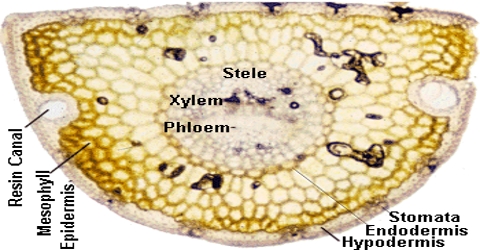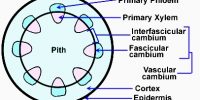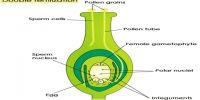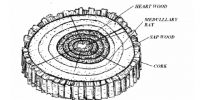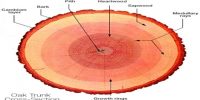The hypodermis is the outmost cell layer of the cortex of plants. It is the outermost layer of cells in the plant cortex, lying immediately beneath the epidermis. These cells are sometimes adapted to give further structural support or to store food materials or water. For example, in pine leaves; forming an extra protective layer or a water storage tissue. It is also known as exodermis.
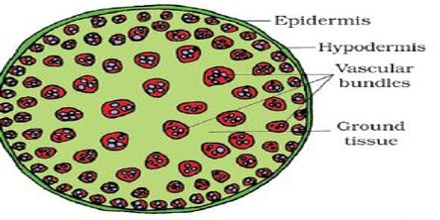
In some plants, the hypodermis is a layer of cells immediately below the epidermis of leaves. In plants, the hypodermis is one or more layers of cells located under the epidermis of the stems, leaves, seeds, and fruits, or under the epiblem of the roots. It is often mechanically strengthened, for example, in pine leaves, forming an extra protective layer or a water storage tissue. In leaves, the hypodermis consists of one, or more often several, layers of cells of aquiferous tissue or of mechanical tissue (for example, in pines and sago palms). In roots, the outer layers of cells of the primary cortex are sometimes called the exodermis.
Formation
- It is usually composed of some layers of compactly arranged collenchyma cells.
- The cell walls are thickened due to the deposition of cellulose and intercellular space is absent.
- The cells of this portion usually contain chloroplast.
- They develop from the outer tangential wall inward.
- It is the outermost cell layer of the cortex of plants.
Functions:
- It provides mechanical support to the stem.
- If chloroplast presents they can prepare food.
- They provide structural support, particularly in growing shoots and leaves. In the leaf, the hypodermis is formed when the cells of the epidermis are divided by septa that are parallel to the surface of the leaf.
- It is composed of two or three lasers of round and walled thin parenchymatous cells.
- The hypodermis is part of the primary cortex of stems, often consisting of cells with thickened walls, and maybe classified by function as mechanical tissue.
